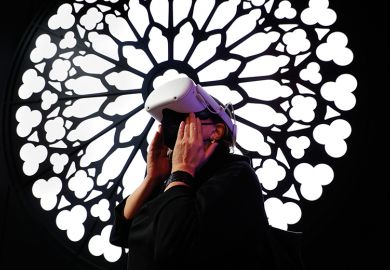Female academics and those in arts, humanities and social science (AHSS) subjects engage and communicate with the public more than other scholars, a major report has found.
The report revealed that some researchers in more “technical” subjects such as mathematics claimed that their disciplines were more difficult to explain to the public.
Nearly 2,500 academics were asked if and how they interacted with the public, and whether they thought it was important. More than eight in 10 had some form of interaction in the past 12 months, with the most common form being through social media.
But in almost all types of public interaction, those from AHSS subjects were more active than those from science, technology, engineering and mathematics (STEM).
For example, 64 per cent of AHSS scholars had given a public lecture in the past year, compared with 40 per cent of those in STEM. Nearly half of AHSS academics had engaged with policymakers, compared with just over a third of those in STEM subjects.
Some from more “technical” disciplines felt that they had to “work harder to sell their subjects”, according to the report.
It quoted one researcher as saying that “a lot of my research is in the area of complicated geometry and it’s pretty hard to get other mathematicians involved, never mind the general public! The cryptology side is more interesting to the public.”
Chloe Sheppard, researchers’ engagement manager at the Wellcome Trust and chair of the steering group that directed the research, said that some of the differences in public engagement could be due to the fact that those in social science, for example, used the public in their research. Natural scientists, on the other hand – with the exception of clinicians – had no way to do so.
But asked whether the sometimes abstract nature of research in STEM subjects could excuse a lack of public interaction, Ms Sheppard said: “I don’t think [this explanation] is good enough.”
She acknowledged that some subjects could be more difficult to explain than others, but added that this argument could be “a bit of a cop-out”.
“You’re not necessarily going to be talking about the details of your research,” she said. Instead, the public is interested in the “big questions” that research is addressing, she added.
Female researchers were also slightly more engaged with the public, the study found, both at early career and senior levels. Ms Sheppard said that this could be due to women wanting to show the public that their subject was not dominated by men.
Another striking finding was that there has been very little increase in STEM researchers’ public interaction since a similar study was carried out in 2006, even though many more said that it was important.
Despite this increase in interest, more than four in 10 STEM researchers still said that engaging with the public was “not important”, compared with about one-quarter of AHSS academics.
Factors Affecting Public Engagement by Researchers was released on 2 December. It was supported by a consortium of research funders including the Wellcome Trust.
POSTSCRIPT:
Print headline: Scientists ‘less engaged with public than arts and humanities scholars’
Register to continue
Why register?
- Registration is free and only takes a moment
- Once registered, you can read 3 articles a month
- Sign up for our newsletter
Subscribe
Or subscribe for unlimited access to:
- Unlimited access to news, views, insights & reviews
- Digital editions
- Digital access to THE’s university and college rankings analysis
Already registered or a current subscriber? Login









